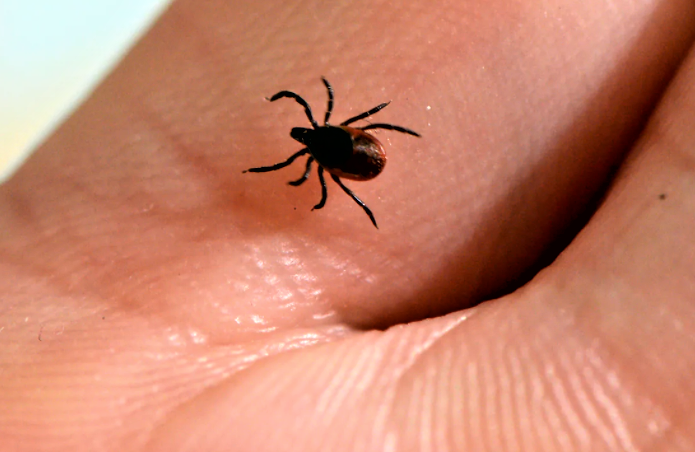
No more a danger for avid gardeners and outdoorsmen. The dangerous little bloodsucking parasite is now moving into urban areas. Climate change has caused tick populations to increase accelerating their spread into urban areas throughout Canada, according to scientists.
Cases of Lyme disease from tick bites have increased in the last decade because climate change has impacted the movement and spread of tick populations, causing them to move out of their traditional habitats in forests, along trails and in rural environments, into urban centres.
Health Canada reported 2,636 cases of Lyme disease in 2019 compared to 144 cases in 2009.
Lyme disease is spread by the bite of infected blacklegged ticks. These ticks are often found in and near areas with trees, shrubs, tall grass or piles of leaves. It can cause serious health issues if untreated, but you can take action to reduce your risk. Generally, people are infected through the bite of immature ticks called nymphs that are about the size of a poppy seed. Adult ticks (about the size of a sesame seed) can also transmit Lyme disease. Ticks are very small and their bites are usually painless, so you may not know you’ve been bitten.
According to health Canada, the best way to prevent Lyme disease is to avoid being bitten by a tick. Follow these tips when heading outside in areas where ticks can be found:
Prevention
Wear light coloured long-sleeved shirts and pants.
Tuck your shirt into your pants, and your pants into your socks.
Wear closed-toe shoes.
Use bug spray with DEET or Icaridin (always follow label directions).
Walk on cleared paths or walkways.
You can also wear permethrin-treated clothing, now available in Canada (always follow label directions).
Check
Shower or bathe as soon as possible after being outdoors.
Do a daily full body tick check on yourself, your children, your pets and your gear.
Put your clothes in a dryer on high heat for at least 10 minutes.
What should you do if you’re bitten?
Take action
Use clean fine-point tweezers to immediately remove attached ticks:
Grasp the tick’s head as close to your skin as possible.
Slowly pull it straight out. Try not to twist or squeeze the tick.
If parts of the tick’s mouth break off and remain in your skin, remove them with the tweezers.
If you can’t remove the mouthparts, leave them alone, and let your skin heal.
Wash the bite area with soap and water or alcohol-based sanitizer.
Keep the tick in a closed container and bring it with you if you go see your health care provider.
Contact your health care provider if you’re not feeling well or if you are concerned after being bitten by a tick.
The key is early detection
The identification of Lyme disease in its early stages is very important. In most cases, if caught early, Lyme disease can be treated effectively with antibiotics. Symptoms typically occur 3 to 30 days after you’ve been bitten. They can differ from person to person and could include any of the following:
Rash (sometimes shaped like a bull’s eye), Fever, Chills, Headache, Fatigue, Aching muscles and joints, Swollen lymph nodes
More severe symptoms (experienced weeks to months after a tick bite, if untreated) could include but are not limited to: Severe headaches, Facial paralysis (such as Bell’s palsy), Joint pain, Irregular heart beat, Nervous system disorders (such as dizziness, mental confusion or inability to think clearly, and memory loss, nerve pain, numbness or tingling in the hands or feet)
Pets and Lyme disease
Although pets can’t spread Lyme disease directly to humans, they can carry infected ticks into your home or yard. Regular tick checks and prompt tick removal are just as important for pets as for people. Sore muscles and joints are the most common symptom of Lyme disease in pets. Some animals may develop a fever or fatigue. Talk to your veterinarian about tick prevention or if you think your pet has Lyme disease.
Take a look at the
featured Local Savings
at the bottom of this page!















